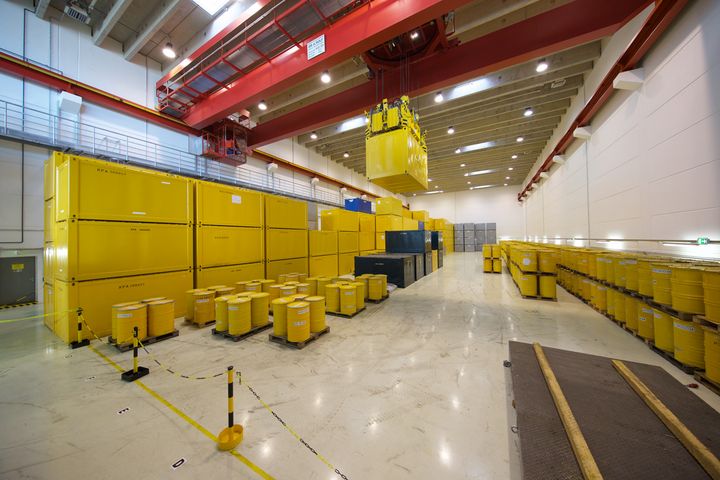Decontamination
In the nuclear context, decontamination is understood as being the elimination of contamination, in other words contamination with radioactive substances. Contamination can always occur in a nuclear plant when open radioactive substances are handled. It is then often impossible to prevent these substances from coming into contact with infrastructure materials, for example pumps and piping, laboratory equipment, containers and ventilation channels, and depositing radioactive substances on the surface (surface contamination) which can also penetrate the surface. Radioactive substances can spread in liquids they come into contact with. This is then called a volume contamination.
With decontamination, two different aims are mainly pursued:
- Decontamination for clearance
- Decontamination for reuse
Decontamination Techniques
The fact that there are two types of contamination, surface and volume contamination, indicates that there also have to be different methods of decontamination.
The simplest decontamination method for a surface is dusting as this often removes a large proportion of the contamination. As in everyday life, water and a cleaning agent are helpful if things need to be more thorough. With strongly adhesive contamination, pickling or high-pressure water jets are used (see illustration above). If the aforementioned methods do not work or the contamination has penetrated the surface, the surface must be removed along with the contamination . This is done, for example, by dry blasting with sand or steel shot or by grinding. Several centimetres of the surface of building structures often have to be stripped away.
Volume decontamination is generally much more involved. Contaminated waste water is often vaporised. The distillate is then free of radioactive substances which remain in the distillation residue. Depending on the elementary composition of the contamination, contaminated metals can also be decontaminated by being melted down; parts of the contamination are concentrated in the slag and the metal can be reused. These are just two examples of volume decontamination, but it is clear that separate methods are needed for every type of material, whilst surface decontamination methods are very similar.
Safety Equipment
During decontamination, radioactive substances are separated from the carrier medium. Mechanical surface decontamination processes in particular (e.g. blasting and grinding) release stripped radioactive materials into the ambient air. Suitable safety equipment must therefore be used to ensure that these released substances remain limited to a small room area within the plant and that no contamination is carried out into the environment even if the inner protective equipment fails. This is achieved through inner building structures and graduated negative pressures. The work area within the building is spatially separated (separate rooms, cabins or housings) and has the lowest pressure of all building sections. In case of leakages the air then always flows into the work area. Air is constantly sucked out of the work area and fed through sophisticated filter systems before it is released into the atmosphere. In addition, a high rate of air exchange within the work area prevents too many radioactive particles settling on work surfaces in the work area and on the material to be decontaminated.
During decontamination work, staff wear special protective clothing which protects them from skin contamination, and breathing protection which prevents radioactive substances from being inhaled. Work must be carried out by remote control in areas in which radiation levels are too high, and eating and drinking is of course strictly forbidden in work areas.
